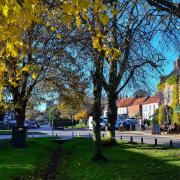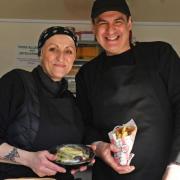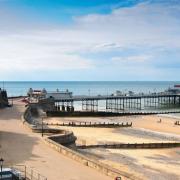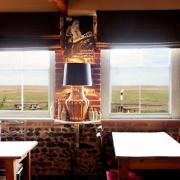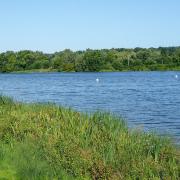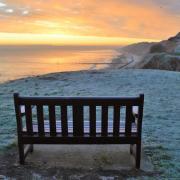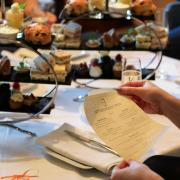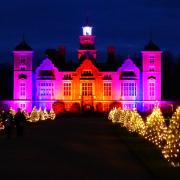Our county has an amazing array of stunning buildings. Keiron Pim speaks to four experts about Norfolk’s architecture and how to add to that heritage

No good quality building stone, bypassed by the Industrial Revolution that powered other parts of the country into prosperity, and in a hard-to-reach location that made the Low Countries across the sea feel like closer neighbours than the rest of England.
They sound like a list of negatives, but in Norfolk’s case they became virtues that combined to create an enviable architectural heritage. From medieval flint churches and timbered halls through to spectacular brick-built stately homes, Norfolk has many centuries’ worth of diverse and nationally important buildings.

So given this variety, can we identify any qualities that are quintessentially “Norfolk” – and if there is a distinct Norfolk architectural style, how can it be retained in new buildings? These are issues that interest many local architects, among them Anthony Hudson, who is president of the Norfolk Association of Architects and visiting professor of architecture at Norwich University of the Arts.
If there is a Norfolk architecture, it encompasses “a mixture emanating from what one might call the vernacular to wonderful set pieces like Blickling Hall”, says Anthony, who founded the Norwich-based Hudson Architects in 2002 and has just won an award from the Royal Institute of British Architects for his work on NUA’s new architecture course building, Boardman House.

“While the vernacular follows similar patterns in the shape of the buildings, the materials used vary considerably from the lovely subtle tones of red brick, the shimmer of knapped flint, milky white clunch to the brownish red of carstone, all because these are the materials sourced from the place where they were built. For me the simple forms of the long house or barn with their pantiled roofs plus the materials mentioned above define the Norfolk vernacular.
“Clearly it’s a different story with one-off buildings, which are for showing off and making them distinctive, such as Norwich Castle or the Cathedral where materials were brought from far and wide.”

Like any county, the story of Norfolk’s buildings begins with those local materials. The crumbly carstone used in the “gingerbread houses” of west Norfolk is the only stone here, and while prepared blocks (properly termed “ashlar”) were transported at great expense from Northamptonshire or northern France for the grand statement buildings that Anthony mentions, most constructions used what was available nearby, such as flint, timber, the dense chalk known as clunch and of course red brick, fired in kilns all over the county.
“If there’s one thing [that defines Norfolk’s architecture] it’s brick,” says the writer and illustrator Matthew Rice, whose book Building Norfolk won top prize at the 2009 East Anglian Book Awards. English Heritage’s former chief executive Simon Thurley concurs, explaining how after the Romans’ departure circa 400AD, brickmaking techniques were forgotten for almost a millennium.

“However, from about 1300, Norfolk men work out how to build from brick and that is a defining moment, and Norfolk is one of the great brick counties of England,” says the historian and broadcaster, who lives at Clifton House in King’s Lynn with his wife Anna Keay. Their home’s medieval undercroft is one of Norfolk’s earliest brick-built structures, although “when it was built, the owners were ashamed it was brick and plastered it over to make it look like stone. It started off as a cheap imitation of stone but very quickly brick actually becomes a material, certainly by the reign of Henry VIII, that people are very proud of. So somewhere like East Barsham Manor, near Walsingham, has elaborate brickwork and there’s no question of this being a material you should be embarrassed about. The owners were building something that was very fashionable out of brick and the brick was part of the fashionableness of it all.”
Other influential early examples include Caister Castle, he says, and in time Norfolk became “a place where some very skilful brickwork is done. I think one of the most skilful pieces of brickwork anywhere in England is in Norfolk, which is Holkham Hall.”

Partly this expertise resulted from the influence of Dutch and Flemish craftsmen. “We were historically hard to reach from the rest of the country, so we had closer links with the countries across the North Sea,” says Matthew Rice. This influence can be seen in the brickwork’s detailing and moulding, and the shaping of gable ends such as those on the 17th century Scole Inn, one of Matthew’s favourite Norfolk buildings.
Though Norfolk had enjoyed great wealth through the Middle Ages, as is apparent from the gloriously extravagant churches such as those at Salle and Walpole St Peter, the 19th century saw it decline while other parts of England accelerated and enthusiastically rebuilt their towns and cities. Two centuries on, as Matthew observes, we’re seeing the benefits.

“It’s incredibly unspoiled,” he says. “We were bypassed by the Industrial Revolution, being principally rural, so avoided losing a wealth of buildings to the 19th century redevelopment that other counties were subjected to. Market towns like Aylsham, Swaffham and Downham Market are nearly what they were in the 17th century.”
As to the future, how do we construct new buildings in a way that keeps Norfolk looking like Norfolk?

“This is an intriguing question and one that I think about a lot,” says Anthony Hudson. “I have the view that there are many ways to design buildings and therefore one should be influenced primarily by the context of each project. So if you are building in a beautiful Norfolk village you need to understand this context and work with it rather than against.”
In a rather different context, Philip Bodie’s Norwich-based practice Feilden and Mawson is currently completing a project intended to achieve the same effect: the four-storey Innovation Centre in King’s Lynn, which overlooks the A47. “It’s deliberate so that people rushing up and down the A47 can see it and can see the investment being put into King’s Lynn employment,” Philip says. “And vice versa when you look out of the building, there are very long strip windows that frame the A47. They’re certainly not embarrassed about it; it has the road almost like a living sculpture.”

Beyond his own work, Philip gives two familiar examples in Norwich - the cathedral’s Hostry and Refectory and the Forum, both designed by Sir Michael Hopkins. “With the Forum, what he did was to recognise the public space in front of the building and St Peter Mancroft across the way,” using the glassy front to reflect the church and enliven the open space. “So the Forum, using local materials, scales and playing that trick of placing the building carefully, makes that unique to that part of Norwich.”
Acknowledging the surroundings, conforming to an appropriate scale and retaining character while avoiding pastiche: these are the guidelines today’s best architects keep in mind as they try to enhance, rather than detract from, an architectural heritage that is second to none.
Clifton House, Simon Thurley and Anna Keay’s medieval merchant’s house in Queen Street, King’s Lynn is open for guided tours; see cliftonhouse.org.uk for details.




